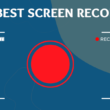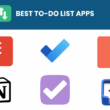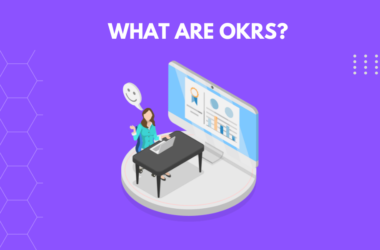Table of Contents Show
Unlock the secrets of how to stop wasting time and dramatically enhance your productivity, by identifying time wasters, mastering your priorities, and setting clear goals.
Are you tired of constantly feeling like you’re wasting time? Discover effective strategies to stop wasting time and start getting more done today.
1. Identify Your Time Wasters
Spotting your Achilles heel is a drastic yet vital step in boosting productivity. Zone in on activities that consume most of your time but yield little value. Understanding where your energy drains will equip you better to address them.
Identifying and addressing personal habits that drain your time can drastically improve productivity and refocus your energy towards value-adding tasks.
Turning the mirror inward, and addressing personal habits is the key to cease sabotaging your efficiency. Assess routinely: Are your constant email checks or social media scrolls affecting your focus? Recognize, reconsider, and realign these habits with your productivity goals.
a. Recognize Distractions
In the pursuit of increased productivity, the first enemy to vanquish is distractions. Recognizing the difference between taking a well-deserved rest and veering off course due to unfocused activities is crucial.
- Identify incessant social media checking or online news reading as distractions rather than breaks.
- Recognize noise pollution such as loud conversations or noisy construction work as potential obstacles to productivity.
- Determine detrimental habits like excessive daydreaming which can be destructive to workflow.
b. Evaluate Your Priorities
Determining your priorities is crucial to optimizing productivity. The process involves examining your tasks and making calculated decisions on what, when, and how to execute. Balancing urgencies and importance can also aid in creating a structured day.
- Evaluate your daily tasks: understand what your obligations are and rank them in terms of importance.
- Distinguish between urgent and important tasks: Urgent tasks demand immediate attention while important tasks are those that contribute to long-term objectives.
- Draw up your priority matrix: This aids in clear visualization of your tasks based on their urgency and importance.
- Balance your day’s schedule: Squeeze in the urgent tasks in between your important tasks to strike a balance.
c. Analyze Time-consuming Tasks
In any routine, certain tasks take longer to complete than others, becoming hidden time-eaters. A careful examination of these time-consuming tasks can shed light on areas where efficiency can be improved.
- Start using ‘The Timewatch’: Break down each long task into separate steps, then time how long it takes to complete each phase. It’ll help you identify which parts of the task are the most time-consuming and allow you to find ways to speed them up.
- Adopt the Efficiency 101 approach: Keep a journal of your daily routine for a week. Look for tasks that take longer than expected or could be done more efficiently. Then find solutions to streamline these tasks, like using software tools, automation, or optimizing the process.
2. Set Clear Goals
When you illustrate your mission with unambiguous goals, you sketch a roadmap to productivity. Assured objectives channel energy and focus, transforming the way work is approached, thereby amplifying productivity. An enterprise or individual devoid of clear goals is akin to a ship lost at sea, meandering aimlessly.
Goals serve as unmistakable markers, guiding you through your trajectory toward success. Embrace steroidal goal-setting, not out of sheer ambition, but as a testament to resolve. By accelerating results and seizing opportunities, such goalposts become the driving forces, steering your productivity towards an exhilarating crescendo.
a. Define SMART Goals
Refining your vision into SMART goals is key to productivity. SMART stands for Specific, Measurable, Achievable, Relevant, and Timely; each term represents a criterion your objectives should meet to create a clear, grounded path toward accomplishment.
- Define your goals with Specificity: Make them precise and detailed
- Ensure Measurability: Have quantifiable objectives
- Assess Achievability: Consider your resources and make sure your goals are feasible
- Take into account Relevance: Align your objectives with your overall direction or vision
- Assign Timeliness: Set clear deadlines to maintain momentum
b. Break Down Goals into Smaller Tasks
Breaking down your larger goals into smaller, manageable tasks is an effective strategy for stopping procrastination and boosting productivity. This task segmentation approach allows for more focused work periods, progress tracking, and a sense of achievement, which motivates continued effort.
- Identify the main goal: Understand your primary objective and what you desire to accomplish.
- Break the main goal into milestones: Divide your main goal into substantial checkpoints.
- Segment milestones: Subdivide the milestones into smaller tasks that are easy to handle.
- Prioritize tasks: Determine the most to least important tasks to know where to focus your effort.
- Estimate time: Predict how long each task will take, aiding in effective time management.
- Track progress: Monitor achievement of small tasks, granting motivation and momentum towards the main goal.
c. Create a Daily or Weekly To-Do List
Just as a captain charts a course to navigate the treacherous seas, entrepreneurs and managers can use daily and weekly to-do lists to achieve their goals. Lists give structure to your day, provide clear targets, and enhance focus on productive tasks.
Perfecting the art of to-do list creation can be a game-changer in managing your workweek. A well-structured list helps in balancing immediate responsibilities with long-term objectives, ensuring steady progress towards overall goal attainment.
Daily and weekly to-do lists aren’t just about logging tasks – they’re a tangible representation of your strategy in action. These lists connect today’s effort with future success, reminding you that the everyday grind has meaningful payoffs in store.
3. Manage Your Time Effectively
Embrace the inner clockkeeper in you by employing proven techniques to manage your time effectively. Laying out task priorities and observing time-blocking helps keep unnecessary tasks at bay – strengthening your control over the ticking clock.
Time, akin to gold, is a finite resource in your possession. Employing effective time management strategies not only maximizes productivity but also uncovers your latent potential waiting to be harnessed.
Steer clear of the whirlwind of busyness by taking command of your time. When you manage time thoroughly, from setting goals to delegating tasks, you become the master of your schedule, forging the way to fruitful progress.
a. Use Time-blocking Techniques
Dismantle the myth of multitasking and amplify efficiency with time-blocking techniques. This productive tactic encourages focus on one task in set ‘blocks’ of time, boosting productivity by allowing deep immersion.
Time-blocking offers a structured path to productivity. By segregating your day into specific, task-centric segments, each tick-tock of the clock becomes an opportunity. Align your workload with your energy peaks and valleys, yielding optimal results!
b. Implement the Pomodoro Technique
Who knew a tomato could enhance productivity? Well, it’s true when it comes to the Pomodoro Technique. Invented in the 1980s, it utilizes a timer to break work into intervals traditionally 25 minutes long, separated by short breaks.
Here’s where cherry tomatoes represent your productivity. Each ‘Pomodoro,’ or ‘cherry tomato,’ is a focused time of work, followed by a break to rest and refresh your mind. This cycle motivates you to power through distractions and keep the momentum going.
Like any productivity strategy, the Pomodoro Technique isn’t one-size-fits-all. Tailor it to your needs. Maybe 25-minute intervals feel too short. Adjust to a pace that suits you. Remember, the goal is to optimize your routine, not cause additional stress.
The trick here is to balance work and rest to stave off mental fatigue. Regular, short breaks improve your concentration and creativity. Plus, tracking your completed Pomodoro can give you a tangible sense of accomplishment, propelling you to get more done.
c. Delegate Tasks
Entrusting tasks to your team members not only lightens your workload but also empowers them. Delegation fosters skill-building, encourages innovative thinking, and strengthens teamwork. Remember, two heads are better than one.
Delegation isn’t just about offloading work. It’s an art, along with a science, requiring keen judgment to determine who’s best suited for a job. This leadership skill pays dividends by boosting productivity and fostering better team dynamics.
Effective delegation isn’t just about passing off work, but also inspiring confidence. By entrusting vital tasks to team members, you signify your trust and encourage them to rise to the challenge, boosting their morale.
Delegation also offers an opportunity for staff development. By assigning a task beyond their regular duties, you’re providing a chance for them to learn and improve, ultimately fostering a more versatile and skilled team.
Finally, by delegating tasks, you free up your time to focus on strategic decisions that carry a bigger impact. You transition from a doer to leader, focusing on what matters the most, rather than being bogged down with mundane tasks.
d. Learn to Say No
One essential aspect of maximizing productivity is recognizing the power in rejection. Too often, we fall prey to people-pleasing, accepting tasks without considering their impact on our time and energy. It’s crucial to learn the art of saying ‘No’ without feeling guilty or anxious. It is not a rejection of the individual but a smart decision for personal productivity.
Understanding when and how to say no can help optimize your time and productivity. By politely declining unnecessary tasks or distractions, you give yourself the space to stay committed to your priorities. Assertive communication skills can significantly help in expressing your refusal without fostering any resentment.
Over-commitment leads to stress, and stress affects productivity. Finding balance is all about knowing when to push forward and when to pull the brakes. By harnessing the potency of saying ‘No’, we create a productive work atmosphere, enabling us to efficiently deal with our core responsibilities.
Learning to say ‘No’ isn’t just about juggling tasks; it’s about strengthening focus. When we’re overwhelmed with tasks, our attention divides, causing productivity to plummet. But, when we selectively accept tasks, our focus sharpens, making us more efficient in our work.
In essence, saying ‘no’ is a respect for your time and energy. It’s choosing quality over quantity, precision over chaos. By making an informed choice to decline additional tasks or distractions, you take a step forward in enhancing your productivity and achieving more of your goals.
4. Optimize Your Work Environment
A well-organized workspace serves as a foundation for maximum productivity. Prioritize workspace wellness with ergonomically designed furniture, effective lighting, and noise-reducing elements for focused workings.
Embrace the benefits of Feng shui in your workspace for better productivity. An optimally arranged workspace, with clutter-free desks and pleasing visuals, can boost your mental energy and aid in achieving a higher output.
a. Organize Your Workspace
Decluttering your workspace serves as a major productivity booster. Embracing minimalism -less is more principle- ensures concentration without distractions. Keep only what’s essential, and let a neat, user-friendly workspace spur your productivity.
A cluttered workspace can hinder your focus, hence the need for routine tidying. Systematic decluttering reduces noise, both visually and mentally. Channel your inner Marie Kondo and hold on only to items that ‘spark joy’ or bring functionality.
Your workspace is not only a physical but also a psychological environment. A clean and organized workspace reflects a mind ready for productive work. Start reaping the benefits of the organization; a tidy workspace ushers in success, step by step.
b. Minimize Digital Clutter
A sea of files, unnecessary apps, and disorganized tabs can clog your digital workspace, slowing both your devices and your productivity. Identify and zap these digital zillions; removal minimizes digital clutter and boosts effectiveness.
Design a clear, efficient blueprint for your digital space. Arrange files systematically, use folders, have fewer tabs open, and uninstall seldom-used applications. This creates a decluttered online environment, feeding your drive to be productive.
By eliminating the noise of excess, you enable critical information and tasks to surface. Arriving in a clean inbox, a well-managed cloud or a slick and smooth operating system can catapult your efficiency to astonishing levels.
Furthermore, emails can swiftly turn from a communication tool into a digital landslide. Consider an email management system or allocate specific times to manage them. This conserves valuable energy for vital tasks.
Your smartphone, often a productivity tool, can become a source of limitless interruption. Regularly review and adjust app notifications, streamline apps, and employ a tidy, easy-to-navigate design. A clutter-free phone can accelerate productivity.
c. Eliminate Physical Distractions
Eradicating physical distractions is a crucial step in controlling chaos. A well-organized workspace devoid of unnecessary items can significantly enhance your concentration and eliminate frequent interruptions.
Adopting a distraction-free workspace has a profound physical impact. It fosters a state of higher focus, leading to increased productivity and a wave of accomplishments, maximizing your potential.
5. Increase Your Focus and Productivity
Eyes on the Prize: Maintaining a laser focus on tasks is a formidable strategy to maximize productivity. Engage in activities that tap into your concentration, such as puzzles or brain-training games to sharpen your focus.
Peak Performance Playbook: Achieve a state of hyper-focus by eliminating distractions, and surrounding yourself with colors that encourage concentration and consistency. This unlocks your productivity potential, driving you towards your goals faster.
Incorporate mindfulness and meditation into your routine to improve focus. Studies have shown these practices enhance mental clarity, fostering productivity.
Taking regular, strategic breaks keeps your mind fresh, sustains high-level performance, and prevents burnout. Brief mental disconnects can spark energy and cultivate creativity.
Balancing your energy levels throughout the day leads to sustainable productivity. Fuel your body with healthy food, stay hydrated, and ensure adequate rest.
a. Practice Mindfulness and Meditation
Embracing Zen philosophy, mindfulness can be a game-changer in productivity. Encouraging full attention to tasks, mindfulness ensures you offer your best, boosting efficiency and minimizing mistakes.
Integrating regular meditation into your routine can be a secret weapon for productivity. It sharpens focus, increases cognitive function, and reduces stress, all contributing to enhanced task completion.
In the chaos of multitasking, mindfulness offers serenity and structure. By focusing on one task at a time, you prevent distractions and aim your energies purposefully, yielding better results.
Your mind, like an untamed horse, can wander. Meditation tames this horse, giving you control over where you channel your thoughts and efforts. Master your mind, master your productivity.
b. Take Regular Breaks
The concept of ‘Break to Make’ isn’t about idling away; rather, it’s about balancing hard work with purposeful breaks, enhancing overall productivity. Planned rest periods can recharge your mental batteries and improve focus.
Don’t misconstrue breaks as wasted time; they are, in fact, the secret sauce that spices up your work potential and promotes creativity. They help avoid the dreaded ‘burnout’, ensuring sustained productivity.
Consider ‘Boosting the Break’ – a tactic to channel the power of strategic pauses. Short, frequent breaks during work can stimulate your brain, supercharging your productivity.
It’s not counterintuitive; science backs it! Researchers have proven that regular diversions significantly increase mental agility, paving the way for innovative solutions and smarter ways to get tasks done.
c. Manage Your Energy Levels
Harness your Circadian rhythm, our internal system governing sleep and vigilance, to achieve peak performance. Understand your ‘high energy’ periods during the day and schedule your essential tasks during these periods for optimized output.
Small wellness practices go a long way in maintaining sustained energy throughout the day. Aim for regular hydration, balanced meals, and sufficient sleep to fuel your productivity.
Create a lifestyle revolving around your biological clock. Notice the ebbs and flows of your energy and align your priorities accordingly. This may lead to unexpected upticks in productivity.
Remember, it’s all about managing energy, not time! Maximize your energetic edge, incorporate wellness practices, and you’ll power through the day with enhanced productivity.
Conclusion
By implementing the strategies outlined in this article, managers and entrepreneurs can overcome the habit of wasting time and unlock their full productivity potential. Don’t let time slip away – take control and achieve your goals with focus and efficiency.
More articles for you:










